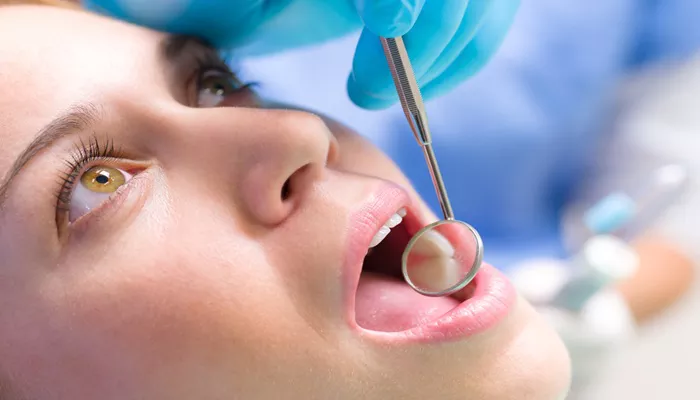Cavities, also known as tooth decay, are one of the most common dental problems worldwide. They occur when bacteria in the mouth break down food particles, especially sugars and starches, producing acids that damage tooth enamel. Over time, this process can lead to the formation of cavities. Understanding which teeth are most susceptible to cavities is crucial for effective prevention and treatment.
Why Some Teeth Are More Prone to Cavities
Several factors contribute to the likelihood of developing cavities in certain teeth. These include tooth anatomy, diet, oral hygiene practices, and overall health.
Tooth Anatomy
Teeth with deep grooves or pits, such as molars, are more prone to cavities. These grooves can trap food particles and bacteria, making them difficult to clean thoroughly with a toothbrush. Misaligned teeth also pose a risk as they can create spaces where food and plaque accumulate, leading to cavities.
Diet and Oral Hygiene
Consuming sugary or acidic foods and drinks frequently increases the risk of cavities. Poor oral hygiene, such as inadequate brushing and flossing, allows plaque to build up, further increasing this risk.
Overall Health
Conditions that reduce saliva production, such as dry mouth, can increase the risk of cavities. Saliva helps neutralize acids and wash away bacteria, so its absence makes teeth more susceptible to decay.
The Most Common Teeth to Get Cavities
Molars
Molars are the most common teeth to develop cavities. Their role in grinding food means they are more likely to trap food particles in their grooves. These particles can be difficult to remove with regular brushing, making molars particularly susceptible to decay.
Why Molars Are Prone to Cavities:
Anatomy: Molars have deep grooves and pits on their chewing surfaces, which are ideal for trapping food and bacteria.
Function: As grinding teeth, molars are exposed to more food particles than other teeth.
Cleaning Challenges: The narrow grooves on molars can be hard to clean with a toothbrush, making them prone to plaque buildup.
Incisors
Incisors, located at the front of the mouth, can also develop cavities, especially between them. Small food particles, like meat fibers, can get stuck in these spaces and lead to decay if not removed promptly.
Why Incisors Are Prone to Cavities:
Food Trapping: The spaces between incisors can trap small food particles, which can lead to plaque buildup and cavities.
Cleaning Difficulty: These areas can be challenging to clean thoroughly, especially if oral hygiene practices are inadequate.
Canines and Below the Gum Line
Canines, with their pointed shape, are less prone to cavities than molars or incisors. However, food particles can sometimes get stuck below the gum line around canines and incisors. This can lead to hidden cavities that are difficult to detect until they become severe.
Why Areas Below the Gum Line Are Prone to Cavities:
Hidden Spaces: Food can accumulate below the gum line, where it is hard to clean and can lead to undetected cavities.
Gum Recession: As gums recede, more of the tooth surface is exposed, increasing the risk of decay.
Around Old Dental Work
Teeth with existing fillings, crowns, or other restorative work are also at risk. The edges of these dental restorations can provide a haven for plaque and bacteria, leading to new cavities.
Why Areas Around Dental Work Are Prone to Cavities:
Irregular Surfaces: The junctions between dental restorations and natural teeth can trap plaque and bacteria.
Cleaning Challenges: These areas can be difficult to clean thoroughly, increasing the risk of decay.
Preventing Cavities in Prone Teeth
Prevention is key to reducing the risk of cavities in susceptible teeth.
Here are some strategies to help protect your teeth:
Good Oral Hygiene
Brushing: Use a fluoride toothpaste and brush your teeth at least twice a day. Pay special attention to molars and areas between teeth.
Flossing: Floss once a day to remove food particles from between teeth and below the gum line.
Mouthwash: Consider using a mouthwash to help kill bacteria and strengthen teeth.
Dietary Changes
Reduce Sugary Foods: Limit sugary and acidic foods and drinks to reduce acid production in the mouth.
Avoid Frequent Snacking: Try to snack less frequently to minimize exposure to sugars and acids.
Regular Dental Visits
Check-Ups: Regular dental check-ups can help identify early signs of cavities and address them before they become serious.
Fluoride Treatments: Fluoride can strengthen tooth enamel and make teeth more resistant to decay.
Sealants: Dental sealants can be applied to molars to protect the grooves from food and bacteria.
Managing Overall Health
Address Dry Mouth: If you have dry mouth, use saliva substitutes or consult your dentist for advice.
Manage Health Conditions: Certain health conditions can increase cavity risk; managing these conditions can help protect your teeth.
Conclusion
Cavities are a common dental issue, but understanding which teeth are most susceptible can help you take targeted preventive measures. By focusing on good oral hygiene, dietary changes, regular dental visits, and managing overall health, you can significantly reduce your risk of developing cavities. Remember, prevention is always better than treatment when it comes to maintaining a healthy, cavity-free smile.

